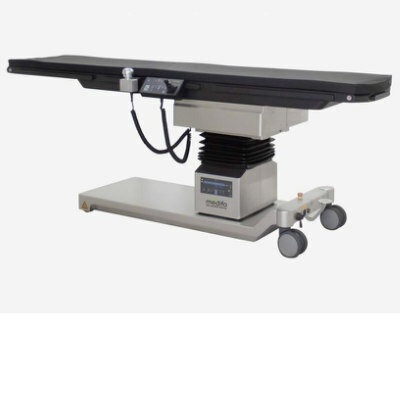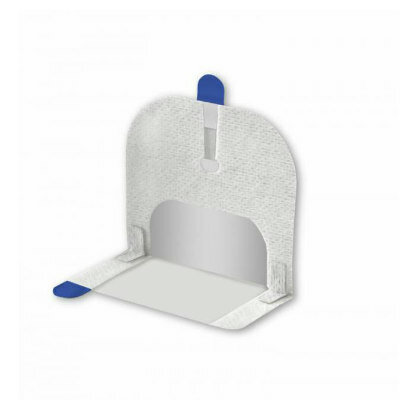Siemens Healthineers' Acquires Corindus to Enhance Robotic-Assisted Interventions
|
By MedImaging International staff writers Posted on 13 Aug 2019 |

Image: The CorPath GRX system (Photo courtesy of Corindus).
Siemens Healthineers AG (Erlangen, Germany) has entered into a merger agreement with Corindus Vascular Robotics, Inc. (Boston, MA. USA) to acquire the company, which offers a robotic treatment platform for the major vascular therapeutic markets, including coronary, peripheral vascular and neurovascular interventions.
Corindus develops, produces and sells robotic systems for minimally invasive procedures. These systems help doctors to precisely control guide catheters, guide wires, balloon or stent implants via integrated imaging. The physician does not have to stand at the angiography table as usual but can control the procedure with a separate controlling module and is therefore, less exposed to radiation.
Siemens Healthineers’ acquisition of Corindus meets its objective of simplifying today's challenges in everyday hospital life. Robotic assisted minimally invasive procedures have the potential to reduce treatment times, increase precision during treatment, raise standardization levels in clinical procedures and ultimately improve clinical outcomes, which is the strategic focus of Siemens Healthineers’ Advanced Therapies business segment.
The CorPath systems developed by Corindus will be used along with angiography systems sold by Siemens Healthineers that make minimally invasive treatment possible by using high-quality imaging before and during medical interventions. The company's role in image-based minimally invasive procedures is now complemented by robotic-assisted precision medicine. This expansion strengthens Siemens Healthineers’ therapy position and underlines its role as one of the leading providers of solutions along the entire treatment path. The acquisition of Corindus marks a strategically significant extension of Siemens Healthineers’ therapy business.
The future integration of Siemens Healthineers’ digitization and artificial intelligence solutions with Corindus' robotic systems offers further promising possibilities. The aim is to further increase procedure optimization in order to enable the greatest possible degree of efficiency and clinical reproducibility. Additionally, Corindus is driving forward the approval procedure for remote robotic treatment in vascular interventions. Due to the limited availability of specialists for minimally invasive procedures in many regions and the limited number of corresponding clinical facilities, remote treatment could significantly improve patients' access to treatment in the future.
“Together with Corindus, Siemens Healthineers is well-positioned to be one of the leading players in the field of robotic vascular interventions and to perform minimally invasive procedures more accurately, more quickly and more effectively. With this acquisition, we are opening up a new field for our image-guided therapies business. Together with our strong portfolio in imaging, digitalization and artificial intelligence, we are creating significant synergies to advance therapy outcomes,” said Bernd Montag, CEO of Siemens Healthineers AG.
“The interplay of exact imaging and robotic-assisted interventions will enhance both the eyes and hands of the physician, metaphorically speaking. With the addition of Corindus to our strong therapies portfolio we sharpen our procedural focus and will grow by expanding precision medicine and improving clinical outcomes. In the future, our digital and artificial intelligence-based tools will help to integrate the aspects of image-guidance and therapy even further,” said Michel Therin, President Advanced Therapies at Siemens Healthineers.
“The collaboration with Siemens Healthineers is a unique opportunity to take our business to the next level and continue our success story. Together we plan to develop next-generation solutions that further improve patient care,” said Mark Toland, President and CEO at Corindus.
Corindus develops, produces and sells robotic systems for minimally invasive procedures. These systems help doctors to precisely control guide catheters, guide wires, balloon or stent implants via integrated imaging. The physician does not have to stand at the angiography table as usual but can control the procedure with a separate controlling module and is therefore, less exposed to radiation.
Siemens Healthineers’ acquisition of Corindus meets its objective of simplifying today's challenges in everyday hospital life. Robotic assisted minimally invasive procedures have the potential to reduce treatment times, increase precision during treatment, raise standardization levels in clinical procedures and ultimately improve clinical outcomes, which is the strategic focus of Siemens Healthineers’ Advanced Therapies business segment.
The CorPath systems developed by Corindus will be used along with angiography systems sold by Siemens Healthineers that make minimally invasive treatment possible by using high-quality imaging before and during medical interventions. The company's role in image-based minimally invasive procedures is now complemented by robotic-assisted precision medicine. This expansion strengthens Siemens Healthineers’ therapy position and underlines its role as one of the leading providers of solutions along the entire treatment path. The acquisition of Corindus marks a strategically significant extension of Siemens Healthineers’ therapy business.
The future integration of Siemens Healthineers’ digitization and artificial intelligence solutions with Corindus' robotic systems offers further promising possibilities. The aim is to further increase procedure optimization in order to enable the greatest possible degree of efficiency and clinical reproducibility. Additionally, Corindus is driving forward the approval procedure for remote robotic treatment in vascular interventions. Due to the limited availability of specialists for minimally invasive procedures in many regions and the limited number of corresponding clinical facilities, remote treatment could significantly improve patients' access to treatment in the future.
“Together with Corindus, Siemens Healthineers is well-positioned to be one of the leading players in the field of robotic vascular interventions and to perform minimally invasive procedures more accurately, more quickly and more effectively. With this acquisition, we are opening up a new field for our image-guided therapies business. Together with our strong portfolio in imaging, digitalization and artificial intelligence, we are creating significant synergies to advance therapy outcomes,” said Bernd Montag, CEO of Siemens Healthineers AG.
“The interplay of exact imaging and robotic-assisted interventions will enhance both the eyes and hands of the physician, metaphorically speaking. With the addition of Corindus to our strong therapies portfolio we sharpen our procedural focus and will grow by expanding precision medicine and improving clinical outcomes. In the future, our digital and artificial intelligence-based tools will help to integrate the aspects of image-guidance and therapy even further,” said Michel Therin, President Advanced Therapies at Siemens Healthineers.
“The collaboration with Siemens Healthineers is a unique opportunity to take our business to the next level and continue our success story. Together we plan to develop next-generation solutions that further improve patient care,” said Mark Toland, President and CEO at Corindus.
Latest Industry News News
- Bayer and Google Partner on New AI Product for Radiologists
- Samsung and Bracco Enter Into New Diagnostic Ultrasound Technology Agreement
- IBA Acquires Radcal to Expand Medical Imaging Quality Assurance Offering
- International Societies Suggest Key Considerations for AI Radiology Tools
- Samsung's X-Ray Devices to Be Powered by Lunit AI Solutions for Advanced Chest Screening
- Canon Medical and Olympus Collaborate on Endoscopic Ultrasound Systems
- GE HealthCare Acquires AI Imaging Analysis Company MIM Software
- First Ever International Criteria Lays Foundation for Improved Diagnostic Imaging of Brain Tumors
- RSNA Unveils 10 Most Cited Radiology Studies of 2023
- RSNA 2023 Technical Exhibits to Offer Innovations in AI, 3D Printing and More
- AI Medical Imaging Products to Increase Five-Fold by 2035, Finds Study
- RSNA 2023 Technical Exhibits to Highlight Latest Medical Imaging Innovations
- AI-Powered Technologies to Aid Interpretation of X-Ray and MRI Images for Improved Disease Diagnosis
- Hologic and Bayer Partner to Improve Mammography Imaging
- Global Fixed and Mobile C-Arms Market Driven by Increasing Surgical Procedures
- Global Contrast Enhanced Ultrasound Market Driven by Demand for Early Detection of Chronic Diseases
Channels
Radiography
view channel
Novel Breast Imaging System Proves As Effective As Mammography
Breast cancer remains the most frequently diagnosed cancer among women. It is projected that one in eight women will be diagnosed with breast cancer during her lifetime, and one in 42 women who turn 50... Read more
AI Assistance Improves Breast-Cancer Screening by Reducing False Positives
Radiologists typically detect one case of cancer for every 200 mammograms reviewed. However, these evaluations often result in false positives, leading to unnecessary patient recalls for additional testing,... Read moreMRI
view channel
PET/MRI Improves Diagnostic Accuracy for Prostate Cancer Patients
The Prostate Imaging Reporting and Data System (PI-RADS) is a five-point scale to assess potential prostate cancer in MR images. PI-RADS category 3 which offers an unclear suggestion of clinically significant... Read more
Next Generation MR-Guided Focused Ultrasound Ushers In Future of Incisionless Neurosurgery
Essential tremor, often called familial, idiopathic, or benign tremor, leads to uncontrollable shaking that significantly affects a person’s life. When traditional medications do not alleviate symptoms,... Read more
Two-Part MRI Scan Detects Prostate Cancer More Quickly without Compromising Diagnostic Quality
Prostate cancer ranks as the most prevalent cancer among men. Over the last decade, the introduction of MRI scans has significantly transformed the diagnosis process, marking the most substantial advancement... Read moreUltrasound
view channel
Deep Learning Advances Super-Resolution Ultrasound Imaging
Ultrasound localization microscopy (ULM) is an advanced imaging technique that offers high-resolution visualization of microvascular structures. It employs microbubbles, FDA-approved contrast agents, injected... Read more
Novel Ultrasound-Launched Targeted Nanoparticle Eliminates Biofilm and Bacterial Infection
Biofilms, formed by bacteria aggregating into dense communities for protection against harsh environmental conditions, are a significant contributor to various infectious diseases. Biofilms frequently... Read moreNuclear Medicine
view channel
New SPECT/CT Technique Could Change Imaging Practices and Increase Patient Access
The development of lead-212 (212Pb)-PSMA–based targeted alpha therapy (TAT) is garnering significant interest in treating patients with metastatic castration-resistant prostate cancer. The imaging of 212Pb,... Read moreNew Radiotheranostic System Detects and Treats Ovarian Cancer Noninvasively
Ovarian cancer is the most lethal gynecological cancer, with less than a 30% five-year survival rate for those diagnosed in late stages. Despite surgery and platinum-based chemotherapy being the standard... Read more
AI System Automatically and Reliably Detects Cardiac Amyloidosis Using Scintigraphy Imaging
Cardiac amyloidosis, a condition characterized by the buildup of abnormal protein deposits (amyloids) in the heart muscle, severely affects heart function and can lead to heart failure or death without... Read moreGeneral/Advanced Imaging
view channel
New AI Method Captures Uncertainty in Medical Images
In the field of biomedicine, segmentation is the process of annotating pixels from an important structure in medical images, such as organs or cells. Artificial Intelligence (AI) models are utilized to... Read more.jpg)
CT Coronary Angiography Reduces Need for Invasive Tests to Diagnose Coronary Artery Disease
Coronary artery disease (CAD), one of the leading causes of death worldwide, involves the narrowing of coronary arteries due to atherosclerosis, resulting in insufficient blood flow to the heart muscle.... Read more
Novel Blood Test Could Reduce Need for PET Imaging of Patients with Alzheimer’s
Alzheimer's disease (AD), a condition marked by cognitive decline and the presence of beta-amyloid (Aβ) plaques and neurofibrillary tangles in the brain, poses diagnostic challenges. Amyloid positron emission... Read more.jpg)
CT-Based Deep Learning Algorithm Accurately Differentiates Benign From Malignant Vertebral Fractures
The rise in the aging population is expected to result in a corresponding increase in the prevalence of vertebral fractures which can cause back pain or neurologic compromise, leading to impaired function... Read moreImaging IT
view channel
New Google Cloud Medical Imaging Suite Makes Imaging Healthcare Data More Accessible
Medical imaging is a critical tool used to diagnose patients, and there are billions of medical images scanned globally each year. Imaging data accounts for about 90% of all healthcare data1 and, until... Read more


















